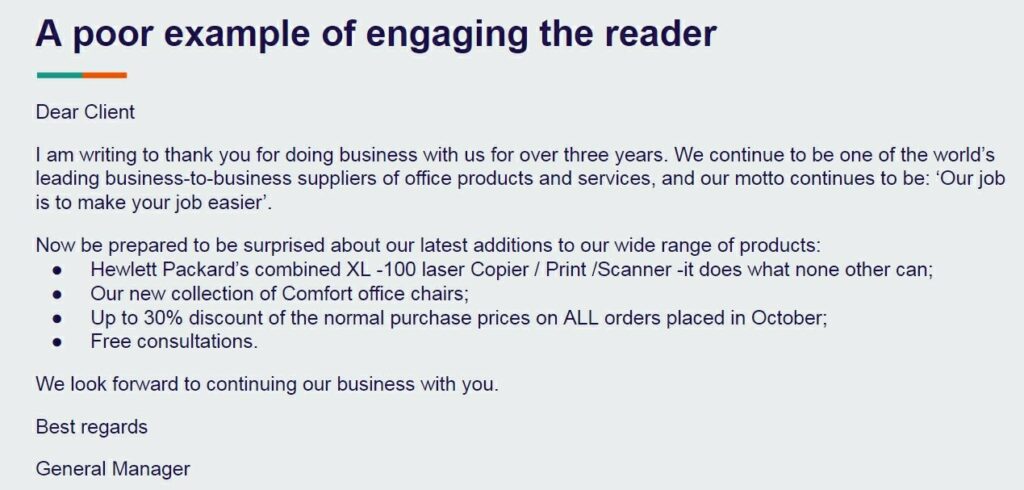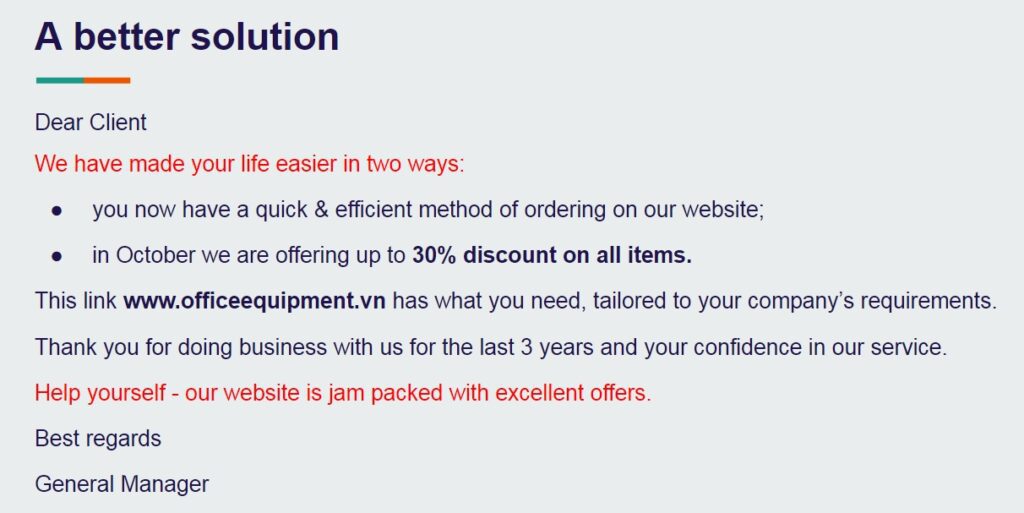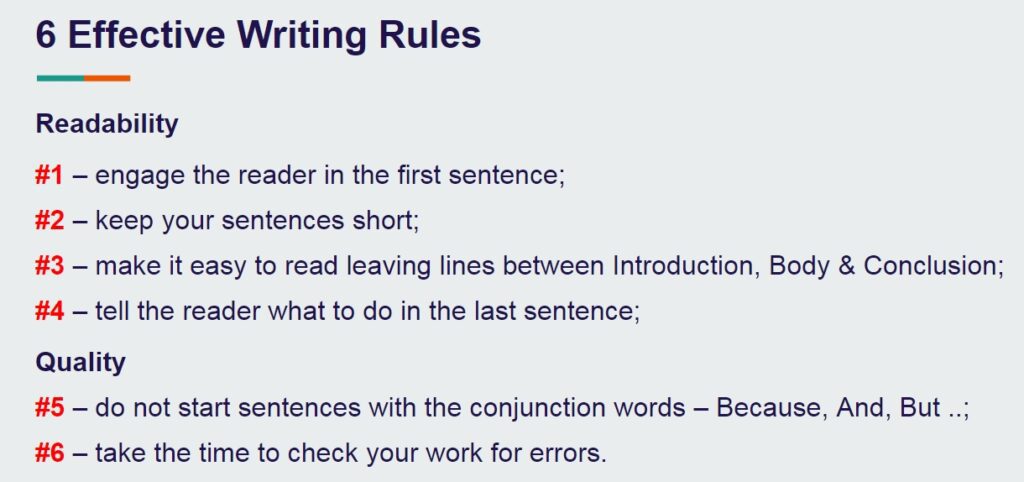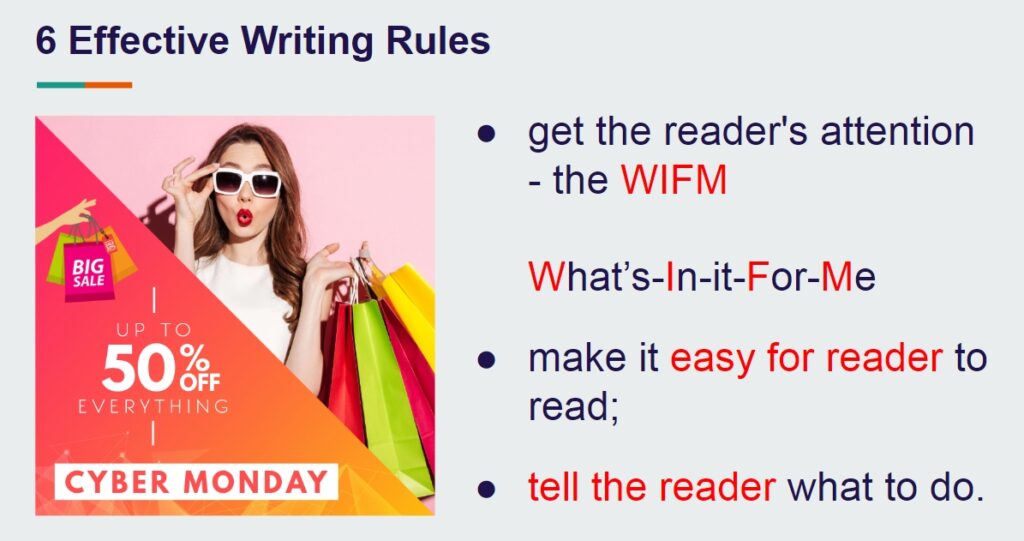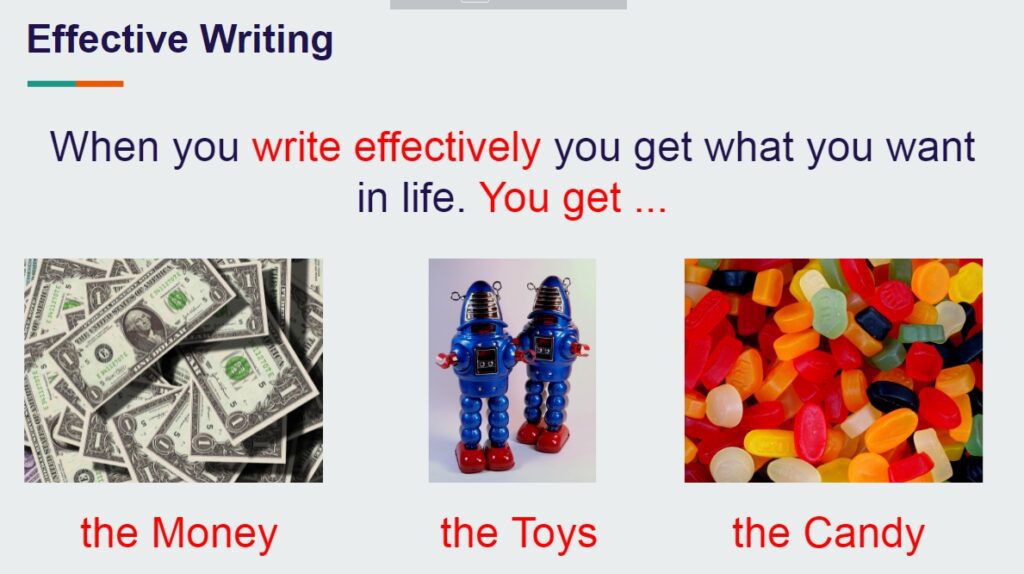Rule #1 – engage the reader in the first sentence.
Learning to effectively engage the reader in the first paragraph is a key element to writing effectively.
Unless you get the reader’s attention with a first glance at your document it will metaphorically go straight into the rubbish bin. It will not be read further and definitely not actioned.
- Busy managers can get +300 emails a day. How is your email going to get their attention? Why would anyone continue reading past the first sentence if it is not interesting?
- You must get the reader to continue reading past the first sentence, guiding them to the last sentence where you tell them what to do;
- Always try to talk about the person you are emailing using the words ‘you & your’.
Think about what is wrong with the first promotional email.
Why is this not an effective email?
It is written by an office supply company and the first thing it communicates to its readers, who are very busy with their own company, is
‘We continue to be one of the world’s leading business-to-business suppliers of office products and services, and our motto continues to be: ‘Our job is to make your job easier’.
- In the first sentence that should be designed to engage the reader, the writer is talking about themselves. Worse, the only person interested in their motto, is them.
- This email will not be read past the second sentence and will definitely not be actioned. Most readers will immediately think – I do not care about your business – only mine.
- The word ‘you or your’ should be in the first sentence. The reader starts talking exclusively about how they feel using the word ‘we’. This is self-indulgent. The most important person in the conversation is the reader, a client so the writer should be talking about them;
A better solution is to talk about the customer immediately and include a benefit. This is called the WIFM – ‘What is In It For Me’.
Write to your client and say ‘we have made your life easier in two ways’.
You see the same technique used in the Marketing Industry. Why? It works.

